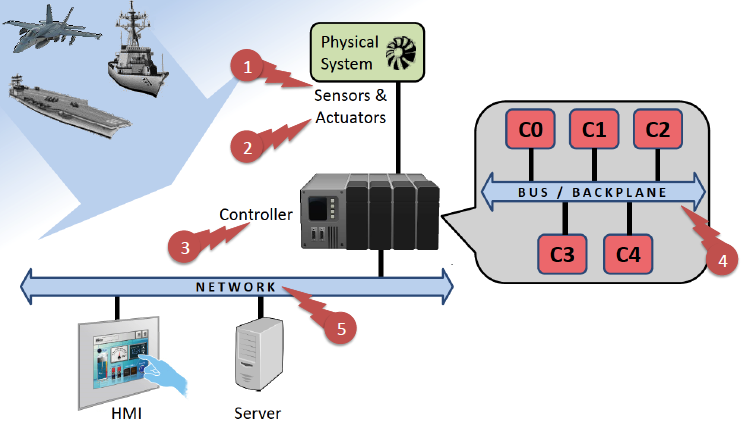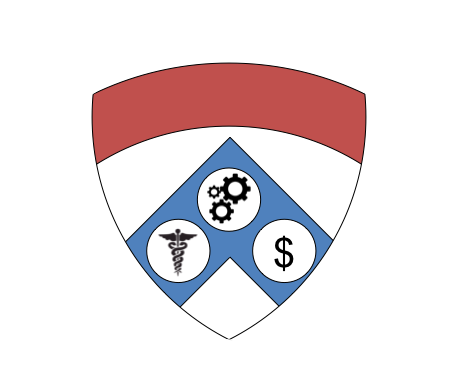Research Interests: Learning-Enabled Cyber-Physical Systems in Medicine and Autonomy.
 My research aims to develop techniques and tools for the design and analysis of learning-enabled cyber-physical systems (LE-CPS) with thin data
My research aims to develop techniques and tools for the design and analysis of learning-enabled cyber-physical systems (LE-CPS) with thin data primarily targeting applications in the
internet-of-medical-things (IoMT) and
autonomous vehicles (AVs). These systems present a unique combination of challenges stemming from the intersection of data science, embedded systems, and cyber-physical security in healthcare and autonomy applications -- challenges that are not well handled by existing robust engineering paradigms. To address these challenges, my research aims to develop novel design and analysis techniques for (i)
interoperable IoT devices, (ii)
actionable decision support, and (iii)
safe learning-enabled control.
Maximizing the impact of my research requires an interdisciplinary approach - thus, I openly collaborate with medical professionals and industry to transition my research into practice.
Q: What are the technical challenges of LE-CPS?
A: Traditional cyber-physical systems (CPS) are safety-critical embedded systems that feature tight coupling between communication and computation used to control complex, dynamic, and uncertain physical/physiological plants. Learning-enabled CPS (LE-CPS) additionally incorporate components whose behavior is driven by "background knowledge" acquired and updated through a "learning process". The design and analysis of LE-CPS presents multiple technical challenges. First, the data collection process requires identifying and collecting the
right data for learning. Second, assuring safety necessitates the ability to provide actionable feedback to clinicans/human operators in situations where confidence in learning degrades. Third, closing-the-loop with learning-enabled components presents challenges for safety and security assurance.
Q: What is "thin data"?
A: While empirical data is often a significant source of this background knowledge in LE-CPS, it can also be limited, sparse, or "thin" due to unmodeled variability, dataset shifts, anomalies, and sensing constraints. Consequently, providing safety guarantees and predictable performance in learning-enabled CPS with thin data is challenging. My research addresses the challenges of thin data by incorporating additional sources of background knowledge including physical/physiological models and contextual information. In healthcare, my work utilizes new sensing modalities as well as physiological and contextual information to overcome thin data challenges stemming from inter/intra-patient variability, constrained sensing and actuation capabilities, limited and protected patient populations, and uncertain models of multi-system physiology. Similarly in autonomy, my research utilizes physical models to enable operation in time-varying, uncertain, unstructured, and adversarial environments.
There is a growing recognition of the importance of robustness in machine learning stemming from the discovery and prevalence of adversarial examples. Consequently, monitoring and analysis of adversarial examples in machine learning has received much interest recently. While much of the work is focused on small perturbations to input images, even children would not be fooled by these adversarial examples due to the robustness of their concepts. Thus, this proposal aims to re-think robust and adaptive machine learning to unlock the key to generative and flexible learning by understanding how very young children approach the world. Our goal is to advent truly robust and adaptive learning tools that benefit---as children do---from experiences and interactions in the world.
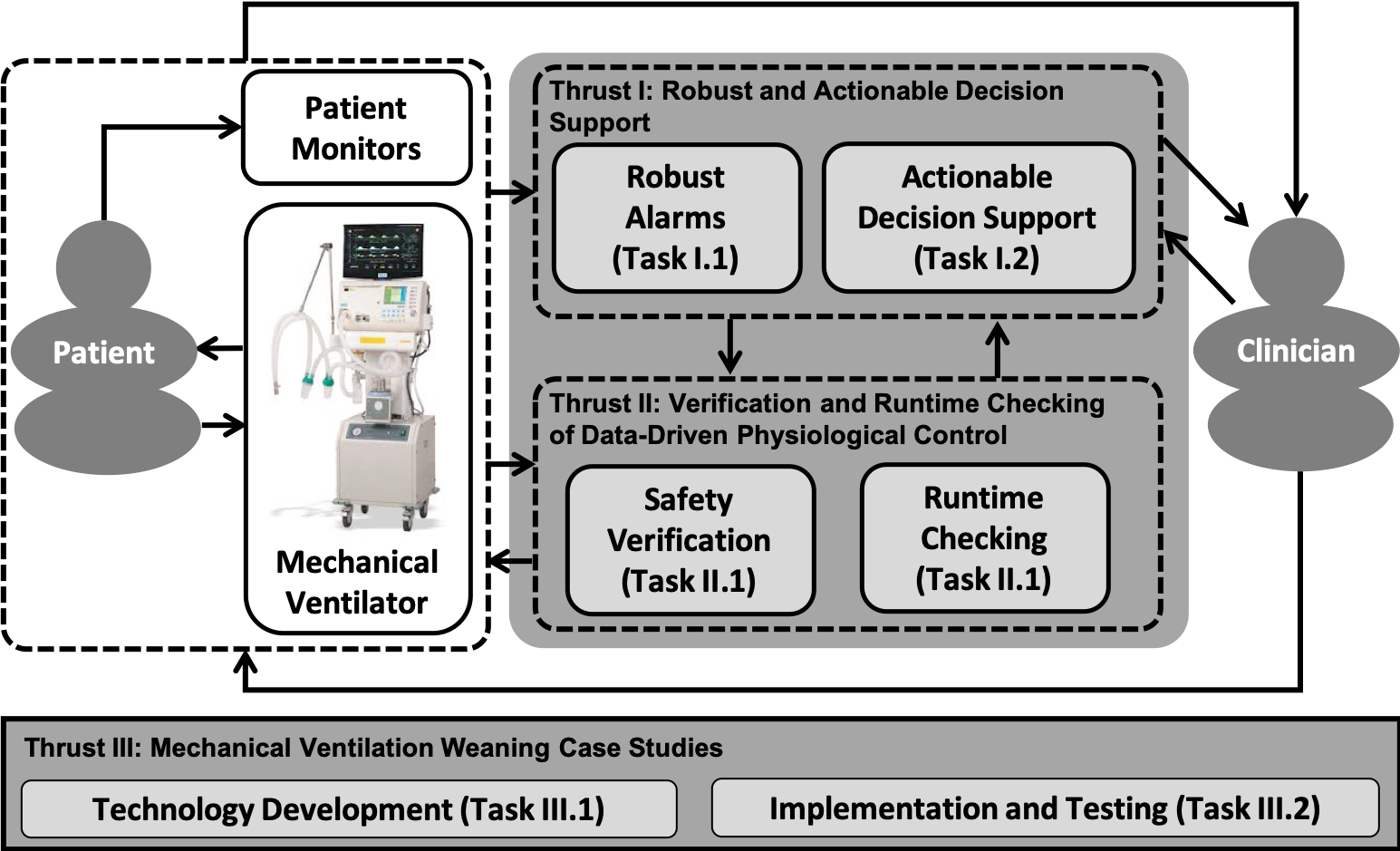
While mechanical ventilators provide life-saving respiratory support, prolonged acute mechanical ventilation (PAMV) can lead to severe complications (e.g. , pneumonia) and increased health-care costs - predicted to be over $32 billion in 2020 and accounting for over 10% of all hospital costs. Thus, mechanical ventilation needs to be discontinued as early as possible, often by using a process known as "weaning". However, the best approach to weaning remains an open question and is subject to controversy, where estimated 170,000 preventable deaths per year in US intensive care units are a result of inappropriate ventilator weaning. Consequently, the Emergency Care Research Institute (ECRI) lists improper ventilator settings as a Top 10 Health Technology Hazard in 2019. Autonomous mechanical ventilation weaning exemplifies a medical cyber-physical systems (MCPS) that requires collections of interconnected medical devices (e.g., ventilators and patient monitors) that are coordinated for treating a patient (i.e. , performing safe autonomous weaning). This project aims to develop fundamental advances in safe and effective data-driven context-aware human-in-the-loop control that will enable autonomous mechanical ventilation weaning. While closed-loop control and data-driven techniques (e.g., system identification and machine learning) have been applied to MCPS, assuring the safety and reliability of using data-driven components that adapt in-the-loop with a human operator remains a challenge. We will demonstrate the impact of our closed-loop design and analysis techniques in autonomous MCPS for mechanical ventilation weaning .
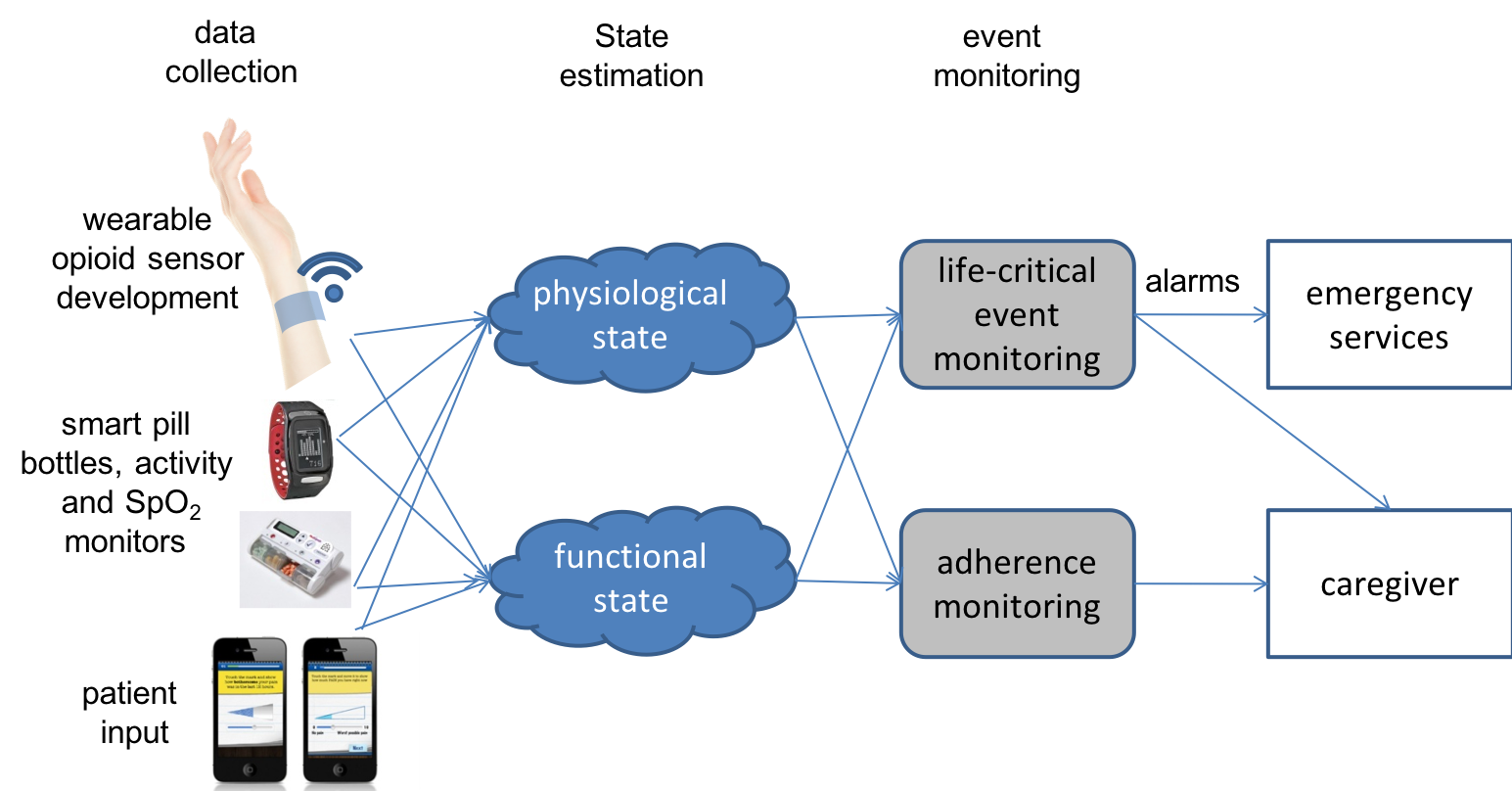
Chronic pain is common and a major economic burden. An estimated 100 million people in the US, and 1.5 billion people worldwide, suffer from chronic pain. In the US alone, estimates of the total annual incremental cost of health care due to pain ranges from $560 billion to $635 billion (in 2010). So far, only approximately 1 out of 4 individuals with chronic pain receive appropriate therapy. A significant contributor to poor chronic pain management is misuse of medication (e.g., opioids). Studies have shown that opioid non-adherence rates range from 47% to 78% in chronic pain patients. This proposal aims to develop a wearable and minimally invasive sensing system that will enable remote and continuous monitoring of opioid medication adherence as part of prescribed treatment for chronic pain management. A wearable sensory patch containing microneedles will be developed to continuously monitor opioid levels in the interstitial fluid. The opioid sensor will communicate securely and wirelessly to a system that will aggregate data collected from multiple wearable devices (such as activity monitors and physiological sensors) to estimate the patient physiological and functional state as well as detect overdose and non-adherence events.
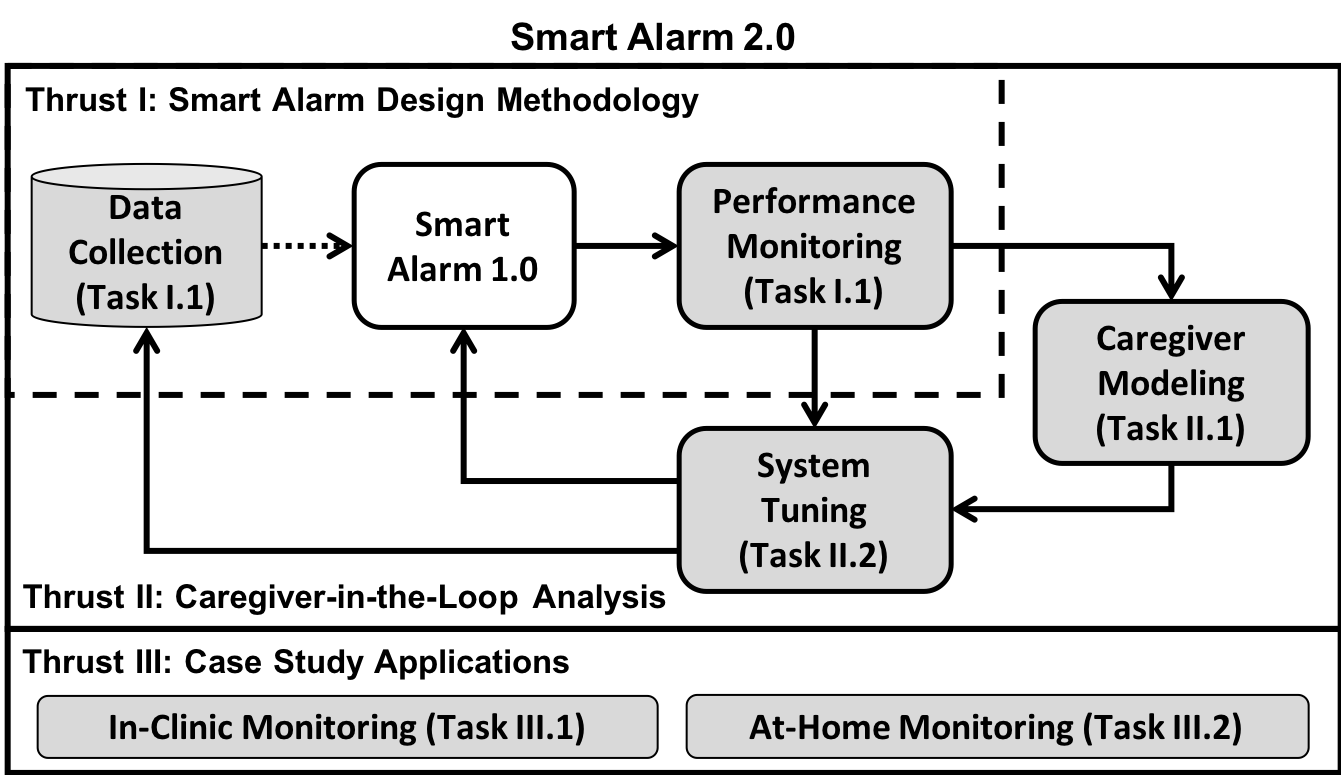
Systems used to continuously monitor vital signs in hospitals and home settings generate alarms intended to warn caregivers, clinicians in the hospital, or parents at home of conditions that warrant their immediate attention. However, less than 1% of these alarms are considered actionable or informative, which has led to clinical alarm fatigue being ranged as one of the Top 10 Health Technology Hazards. While there have been advances in human factors, operational factors, and technical factors independently, their interdependencies have yet to be collectively considered. Consequently, current alarm suppression systems aimed at addressing clinical alarm fatigue are generally not extensible, suffer from low adoption rates, and/or have poor performance in practice. This project aims to develop foundations for the design of next generation smart alarms. Smart Alarms 2.0 will utilize caregiver-in-the-loop alarm suppression systems to reduce the frequency of non-informative alarms in-clinic and at home. Realizing an effective caregiver-in-the-loop alarm suppression system requires fundamental advances in robust alarm suppression design methodologies and caregiver-in-the-loop modeling and analysis. The potential impact of the proposed design and analysis techniques is evaluated in medical scenarios for alarm suppression applications, spanning pediatric wards and at-home monitoring of Bronchopulmonary dysplasia (BPD) patients. This project will lay the foundations for designing caregiver-in-the-loop alarm systems in which physicians, nurses, and parents monitor the right children, at the right times, using optimal alarm settings to maximize informativeness.
Although cognitive behavioral therapy (CBT) can be an effective treatment for transdiagnostic binge eating pathology, a large percent of individuals do not experience clinically significant improvements in rigid dietary restriction (a well-established maintenance factor for binge eating) and treatment outcomes suffer as a result. The primary goal of this STTR Phase 1 application is to develop and pilot an mHealth intervention system (SenseSupport) that can be used as an augmentation to traditional CBT for transdiagnostic binge eating that can better target dietary restriction. Our proposed mHealth intervention system will use continuous glucose monitoring to 1) accurately detect dietary restriction as it occurs, 2) accurately detect known risk-factors for a re-occurrence of dietary restriction (e.g. binge eating and self-induced vomiting episodes), 3) deliver real-time push notifications linked to brief CBT-based interventions when dietary restriction, binge eating, or self-induced vomiting is detected, and 4) share objective data on eating behaviors with a treatment provider to enhance the therapeutic work occurring during in-person CBT.
Current systems for monitoring ill children's vital signs on hospital wards and in homes are estimated to generate in excess of 10 million unnecessary alarms in the United States annually. These alarms lead to alarm fatigue in the nurses and caregivers responsible for responding when something is wrong, resulting in downstream harm to children if truly critical events are missed or ignored. The findings of the Children's Hospital of Philadelphia Patient Safety Learning Laboratory will be immediately relevant to the millions of children and adults admitted to hospitals annually whose vital signs are continuously monitored and the tens of thousands of technology-dependent children and adults living at home who rely on physiologic monitoring to detect deteriorating illness.
Integrated Static and Dynamic Approaches to High-Assurance for Learning-Enabled Cyber-Physical Systems (DARPA Assured Autonomy)
The primary goal of the project is to develop techniques for the design and continual assurance of autonomous systems. Continual assurance is defined as an assurance of the safety and functional correctness of the system provided provisionally at design time, and continually monitored, updated, and evaluated at operation-time as the system and its environment evolves. A learning-enabled cyber-physical system (LE-CPS) is defined as a system composed of one or more Learning-enabled Components (LECs). This project will develop
new techniques specifically targeting assuring challenges of LE-CPS. These techniques will cover design-time tools for LE-CPS, monitoring capabilities to continually assess LE-CPS state, and tools for composing dynamic and static evidences in a high-assurance framework.
Anomaly Detection for Safe Autonomy (Semiconductor Research Corp)
Autonomous systems, and specifically autonomous vehicles, hold much promise to deliver efficiency and cost reduction in their application domains. Recent advances in control and perception technologies are likely to make autonomous systems a practical reality in the next several years. Yet, autonomous vehicles, in particular, are safety-critical systems and many challenges remain to assuring safety of people and property around them. This project aims to provide technologies to ensure high dependability of autonomous vehicles. Specifically we aim to (i) develop context-sensitive detection algorithms for time-series data to improve detection performance and (ii) develop a specification language for anomaly detection monitors to express partial knowledge about system anomalies, and techniques to implement anomaly specification using context-sensitive detectors.
Development of Control-Aware Cyber Techniques for Attack-Resilient Industrial Control & Combat Systems (ONR RHIMES)
The primary goal of the project is to develop techniques for ensuring that industrial control
and combat systems (ICCS) are resilient to cyber-physical attacks; that is, attacks that combine conventional cyber intrusions with interference to the physical environment of ICCS. A number of such attacks have emerged recently. These incidents suggest that conventional information security approaches may not be effective in dealing with such attacks. This project will develop new security techniques specifically targeting cyber-physical attacks. The new techniques will be compatible with existing ICCS development techniques, allowing legacy ICCS to be retrofitted with
enhanced security guarantees.
Security and Privacy-Aware Cyber-Physical Systems (NSF, Intel)
The project aims to achieve a comprehensive understanding of CPS-specific security and privacy challenges. This understanding will enable us to (1) develop techniques to prevent security attacks to CPS and to detect and recover from malicious attacks to CPS; (2) develop techniques for security-aware control design by develop attack resilient state estimator; (3) ensure privacy of data collected and used by CPS, and (4) establish an evidence-based framework for CPS security and privacy assurance, taking into account the operating context of the system and human factors.
The medical device club (MDC) consists of multiple projects targeting specific clinical needs. Projects range from pure-hardware to pure-software, and all shades in-between. Projects generally have a small amount of funding obtained through internal grants, foundations, and/or as small efforts within larger projects. Projects are generally shorter term and focus on rapid development and testing of technologies to address real-world clinical problems. The simple fact being that many clinical problems can be addressed without the need for fundamental research. The medical device club offers an avenue to explore low-hanging fruit solutions that address clinical needs and provide students valuable experience in the health-tech domain.
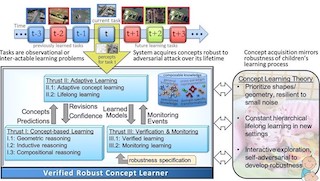
 My research aims to develop techniques and tools for the design and analysis of learning-enabled cyber-physical systems (LE-CPS) with thin data primarily targeting applications in the internet-of-medical-things (IoMT) and autonomous vehicles (AVs). These systems present a unique combination of challenges stemming from the intersection of data science, embedded systems, and cyber-physical security in healthcare and autonomy applications -- challenges that are not well handled by existing robust engineering paradigms. To address these challenges, my research aims to develop novel design and analysis techniques for (i) interoperable IoT devices, (ii) actionable decision support, and (iii) safe learning-enabled control.
Maximizing the impact of my research requires an interdisciplinary approach - thus, I openly collaborate with medical professionals and industry to transition my research into practice.
My research aims to develop techniques and tools for the design and analysis of learning-enabled cyber-physical systems (LE-CPS) with thin data primarily targeting applications in the internet-of-medical-things (IoMT) and autonomous vehicles (AVs). These systems present a unique combination of challenges stemming from the intersection of data science, embedded systems, and cyber-physical security in healthcare and autonomy applications -- challenges that are not well handled by existing robust engineering paradigms. To address these challenges, my research aims to develop novel design and analysis techniques for (i) interoperable IoT devices, (ii) actionable decision support, and (iii) safe learning-enabled control.
Maximizing the impact of my research requires an interdisciplinary approach - thus, I openly collaborate with medical professionals and industry to transition my research into practice.




